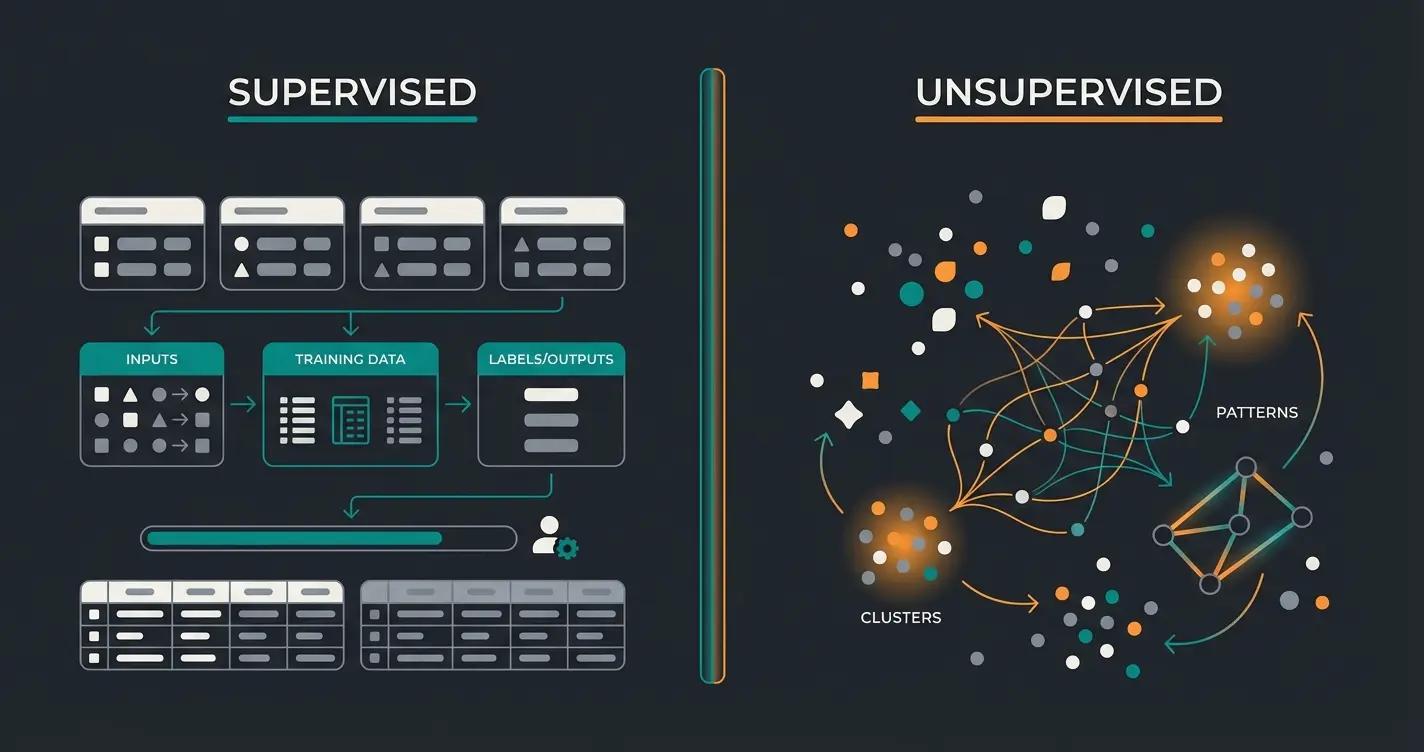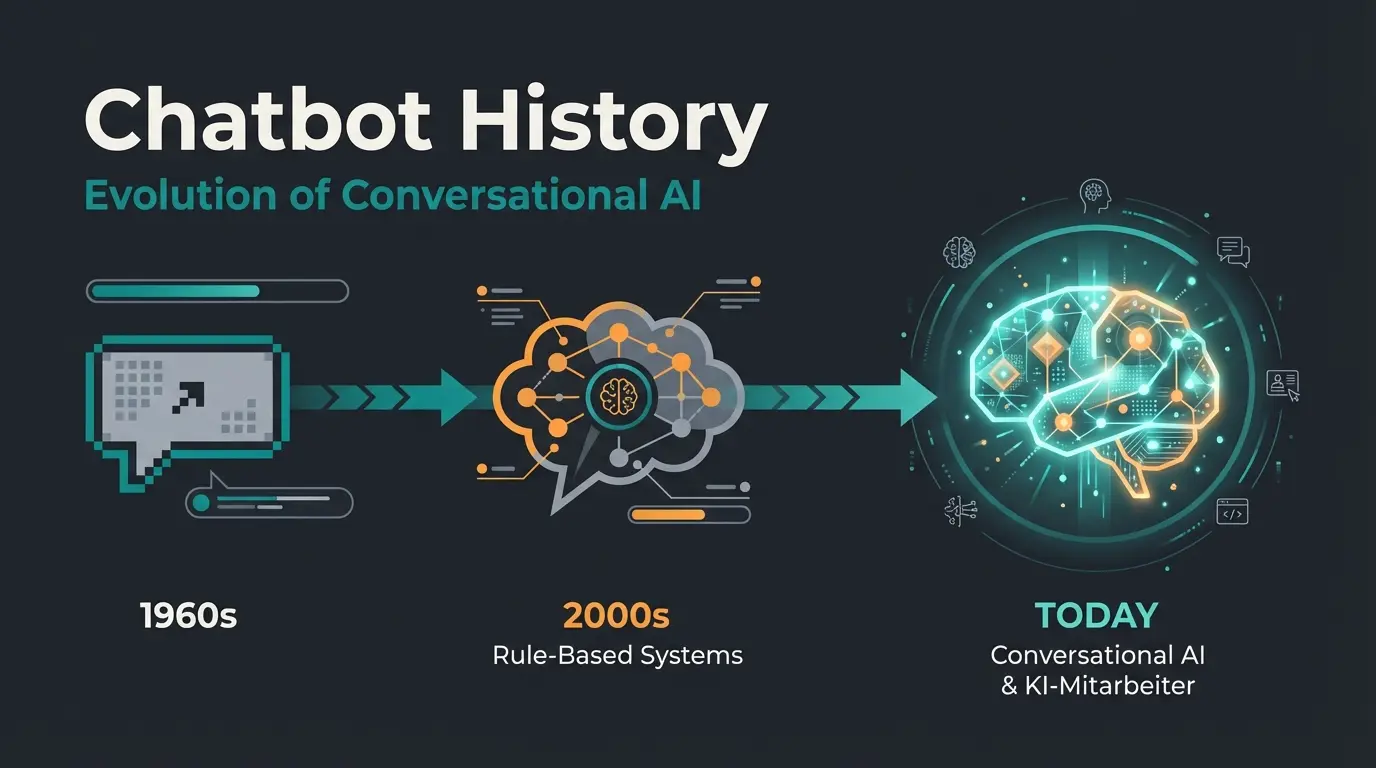AI Chatbot Training: From Simple FAQ Bot to Digital Product Consultant (Guide 2025)
Master AI Chatbot Training: Move beyond basic FAQs. Learn how to curate training data, leverage NLP, and build a consultative sales bot that drives revenue.
Introduction to AI Chatbots and Their Importance
AI chatbots have gained enormous importance in recent years, becoming an indispensable tool for businesses. However, a critical distinction is often missed: most chatbots are just search engines that can talk. True sales AI requires a different kind of training. These intelligent systems are designed to simulate human conversations and provide automated responses to customer inquiries, but their potential goes far beyond simple support.
The core of their functionality is based on advanced algorithms of machine learning and artificial intelligence. According to current Statistics from Forbes, the AI market is expected to reach a volume of $407 billion by 2027. This underscores the growing importance of AI technologies, particularly chatbots, for companies across all industries. AI chatbots offer numerous advantages, including improved customer satisfaction through instant responses, relief for customer service staff, and the ability to provide support around the clock.
Projected AI market volume by 2027
Instant customer support capability
Businesses expecting productivity gains from AI
The functionality of AI chatbots relies on Natural Language Processing (NLP) and machine learning. They analyze input from users, understand the context, and generate appropriate responses. To do this effectively, they require extensive training data. These data are the key to a chatbot's performance and significantly determine how well it can respond to various inquiries. But for a consultative bot, "various inquiries" implies more than just answering FAQs—it means understanding product attributes and customer needs.
Training data plays a central role in Chatbot Development. It encompasses a wide range of information, from simple question-answer pairs to complex conversation patterns. The more extensive and diverse this data is, the better the chatbot can react to different situations. The quality and relevance of the training data directly influence the chatbot's ability to provide natural and helpful responses.
Why Classic Training Data Isn't Enough for Sales
Before diving into the technical details, it is crucial to understand why the standard approach often fails for sales. Dumping PDF manuals into a bot creates a support agent, not a salesperson. A support agent reacts; a consultant proactively asks. To build a consultant, you need to understand the underlying technology.
Foundations of Machine Learning for Chatbots
Machine Learning forms the foundation for the development of modern AI chatbots. It enables these systems to learn from data and continuously improve their performance. The foundations of artificial intelligence are crucial for understanding how chatbots function and are trained.
There are two main approaches in machine learning for chatbots: supervised and unsupervised learning. In supervised learning, the chatbot is trained with labeled datasets consisting of input-output pairs. This helps the system recognize patterns and respond correctly to similar requests. Unsupervised learning, on the other hand, allows the chatbot to independently discover structures in unlabeled data, which is particularly useful for processing complex language patterns.

The learning process through training data is complex and iterative. First, large amounts of data containing relevant conversations, questions, and answers are collected. This data is then prepared and converted into a format that the AI model can process. During training, the model learns to recognize patterns in the data and make predictions based on them.
An important aspect of training is continuous improvement and adaptation. After the initial training, the chatbot is often tested in controlled environments and further optimized. Feedback from real users is collected and incorporated into the training process to steadily improve the chatbot's performance. The functionality of AI chatbots relies on complex neural networks capable of processing and understanding natural language. These networks are "fed" by training data and learn to establish connections between words, sentences, and contexts.
Step-by-Step: How to Train an AI Sales Consultant
To move from a generic bot to a specialized product consultant, you must curate specific types of data. Here is how to structure your training materials:
Step 1: The Technical Foundation (Types of Data)
In the development of AI chatbots, different types of training data play a crucial role. Each data type has its specific advantages, disadvantages, and areas of application:
- Text-based Data: The foundation for training. Includes articles, books, web pages, and transcripts. Advantages: Readily available and good for general language understanding. Disadvantage: Can be outdated or inaccurate.
- Dialogue Data: Recorded conversations between humans or humans and bots. Valuable for learning natural conversation flows. Essential for customer service chatbots.
- Domain-specific Data: Tailored to specific fields (e.g., medical, technical, legal). Offers high accuracy in specialized areas but requires expert knowledge for preparation.
- Multimodal Data: Combines text with images, audio, or video. Enables visual product consultation but is technically demanding to process.
Step 2: The Sales Logic (Product Knowledge)
This is where the "Consultant" differentiation happens. You don't just feed text; you feed Structured Attributes. For example, if you sell headphones, the bot shouldn't just know the description. It needs to know that "Noise Cancelling" implies "Good for Travel" or "Office Use."
Step 3: Soft Skills (Conversation Flow)
Finally, the bot must learn the tone. Is it serious and professional (B2B legal) or casual and enthusiastic (D2C fashion)? This is achieved through "System Prompts" and fine-tuning on brand-specific dialogue examples.
Stop settling for basic support. Transform your product feed into a high-converting sales conversation.
Start Training Your AIData Collection and Preparation
The quality and relevance of training data are critical for the performance of an AI chatbot. The process of data collection and preparation involves several important steps, often summarized as "Garbage In, Garbage Out."
Sources for Training Data
Selecting suitable data sources is the first step in creating an effective training dataset. Here are some possibilities:
- Public Datasets: Freely available collections of texts, dialogues, or domain-specific information.
- Internal Company Data: Customer conversations, emails, support tickets, or product descriptions (PIM systems).
- Web Scraping: Automated extraction of data from websites, forums, or social media.
- Crowdsourcing: Using platforms to collect specific datasets from a large number of people.
When selecting sources, it is important to pay attention to quality, relevance, and legal aspects. The use of vector databases can help to efficiently manage and retrieve large amounts of training data, especially for Retrieval Augmented Generation (RAG).
Data Cleaning and Normalization
Raw data often needs to be cleaned and normalized to improve its quality:
- Cleaning: Removal of duplicates, correction of spelling errors, elimination of irrelevant information.
- Normalization: Unification of formatting, dates, and units of measurement, conversion into a consistent format.
These steps are crucial to reduce inconsistencies and increase the reliability of the training.
Data Expansion and Augmentation
To increase the variety and quantity of training data, various techniques can be applied:
- Paraphrasing: Rewording existing texts to increase variance.
- Translation: Using translation tools to create multilingual datasets.
- Synthetic Data Generation: Using AI models to create new, realistic examples.
These methods help improve the robustness and generalization ability of the chatbot by confronting it with a greater variety of inputs. Careful data collection and preparation lay the foundation for a powerful AI chatbot. It requires time and resources but is critical for the project's success.
The Training Process in Detail
Training an AI chatbot is a complex process involving multiple stages. This section highlights the individual phases of the training process and explains the technical details for a deeper understanding.
Tokenization, Lemmatization, Cleaning
Choosing Architecture (e.g., Transformer, BERT)
Parameter adjustment via Backpropagation
Testing against unseen data to prevent Overfitting
Data Preparation and Preprocessing
The first step in the training process is the careful preparation of training data. This includes cleaning errors, removing duplicates, and normalizing data. For text data, techniques such as tokenization, lemmatization, and removing stop words are often applied. This preprocessing is crucial to ensure high-quality input data for the model.
Model Selection and Architecture
Choosing the right model and its architecture is a critical step. Advanced architectures like Transformer or BERT are often used for modern AI chatbots. Model size and complexity must be carefully adapted to the specific requirements of the chatbot and available resources.
Training Flow and Hyperparameter Optimization
The actual training process involves iteratively adjusting model parameters based on training data. Optimization of hyperparameters plays a central role here. Important hyperparameters include learning rate, batch size, and the number of training iterations. Techniques like Cross-Validation and Grid Search help fine-tune these parameters to achieve the best possible performance.
Validation and Testing
After completing the training, it is crucial to check the model's performance. This is done by validating with a separate dataset not used in training. Validation helps detect problems like overfitting, where the model has learned the training data too precisely and does not generalize well to new data. Finally, the model is evaluated with a test dataset to assess its performance in real-world scenarios. The introduction of an AI chatbot is, therefore, a dynamic process requiring continuous improvement and fine-tuning.
Challenges in Chatbot Training
Training AI chatbots brings various challenges, both technical and ethical. One specific risk for sales bots is Hallucination—when a bot invents product features to please the user.
Dealing with Ambiguity and Context
One of the biggest challenges in chatbot training is dealing with linguistic ambiguities and context-dependent meanings. Human communication is often nuanced. Advanced NLP techniques, such as contextual embeddings and attention mechanisms used in modern Transformer models, help the chatbot understand context better and generate more precise answers.
Bias in Training Data
Another important challenge is dealing with bias in training data. AI models can unintentionally adopt prejudices or discriminatory patterns from training data. To counter this, it is important to ensure diversity, regular verification, balance, and implementation of clear ethical guidelines.
Optimization and Fine-Tuning
The development of an AI chatbot is a continuous process that does not end with initial training. To improve the chatbot's performance and relevance, ongoing optimizations and fine-tuning are required.
- Continuous Improvement through User Feedback: Analyzing user ratings, comments, and FAQs helps identify and fix weaknesses. Conversational AI allows for analyzing user behavior and adapting the chatbot accordingly.
- Transfer Learning and Fine-Tuning: Using a pre-trained model as a starting point and fine-tuning it to specific use case requirements allows benefiting from already learned capabilities while integrating domain-specific knowledge.
- A/B Testing: Comparing different versions of chatbot responses helps identify the most effective phrasing and interaction patterns.
- Regular Knowledge Base Updates: Keeping the chatbot up to date by integrating new information, products, or services is essential.
FAQ Bot vs. Product Consultant: A Comparison
To better understand the shift in training strategy, compare a standard FAQ bot with a specialized Product Consultant AI.
| Feature | Standard FAQ Bot | Product Consultant AI |
|---|---|---|
| Data Source | Static PDFs, FAQs, Return Policies | Dynamic Product Feeds, PIM, Customer Reviews |
| Behavior | Reactive (Waits for question) | Proactive (Asks clarifying questions) |
| Goal | Deflect support tickets | Drive conversion and sales |
| Training Focus | Pattern Matching | Sales Logic & Attribute Mapping |
Ethical Aspects and Data Privacy
When developing and deploying AI chatbots, ethical considerations and data privacy aspects play a central role. This is particularly vital in the EU market (GDPR/DSGVO compliance).
The deployment of AI chatbots raises various ethical questions: Transparency (users should know they are interacting with AI), Fairness (free from bias), and Accountability. According to Forbes, over 75% of consumers are concerned about misinformation from AI. To address these concerns, strict data privacy measures regarding training data are necessary:
- Anonymization: Personal information in training data must be anonymized.
- Consent: Explicit consent should be obtained when using user data for training.
- Data Security: Robust security measures to protect training data are essential.
- Data Minimization: Only data necessary for training should be collected and used.
Conclusion: The Difference Between Support and Sales
Training AI chatbots is a complex and dynamic process. The quality of training data plays a decisive role in the capability and reliability of the chatbot. Through careful data selection, preparation, and continuous optimization, companies can develop AI chatbots that not only work efficiently but also provide valuable support in customer service and active sales.

The future of AI chatbots promises exciting developments, including multimodal interaction, improved context processing, and deeper personalization. However, the immediate opportunity lies in transforming your bot from a passive responder into an active consultant. Don't just train your AI to know your products—train it to sell them.
For general knowledge, PDFs and URLs work well. However, for product consultation, structured data (CSV, JSON, XML) from a PIM system is superior as it allows the AI to understand specific attributes like size, price, and compatibility.
Use a RAG (Retrieval Augmented Generation) architecture. This forces the AI to look up facts in your specific database before generating an answer, rather than relying on its general training which might contain errors.
Yes, but strictly under GDPR (DSGVO) regulations. You must anonymize all PII (Personally Identifiable Information) before feeding it into any model and ensure you have the right to process the data.
Training builds the model from scratch (expensive, rare). Fine-tuning adapts an existing model (like GPT-4) to your specific tone of voice. Most businesses actually need RAG (connecting the model to your data) rather than full training.
Transform your passive FAQ bot into a proactive sales machine. Get our comprehensive guide on Consultative AI Training.
Get the Strategy Guide
